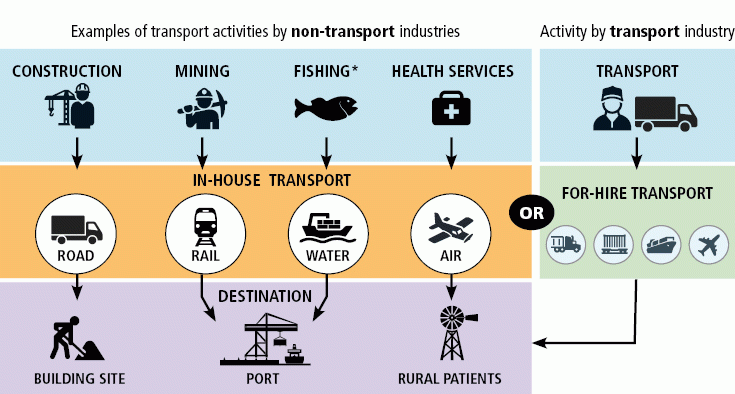The Australian Transport Economic Account (ATEA) is an experimental Transport Satellite Account that provides a more comprehensive picture of transport by bringing together components of transport activity throughout the Australian economy. Satellite accounts are adjunct to, and integrated with, Australia’s System of National Accounts. This account has been compiled on a basis consistent with the national accounts, but with some adjustments to reclassify and identify transport activity across all industries, where transport is defined as the movement of people or goods from one location to another.
Total transport activity, as defined in this account, includes activity conducted on a For-hire basis, undertaken by businesses classified to the Transport, postal and warehousing industry in the National Accounts, and also provides a new, explicit measure of In-house transport activity undertaken outside this industry.
Total transport activity includes:
- For-hire transport activity undertaken by businesses within the Transport, postal and warehousing industry, e.g. air passenger transport by commercial airlines, or transport of goods by freight transport businesses; and
- In-house transport activity of businesses in non-transport industries, including:
- ancillary transport activity which is not intended for market, and is consumed in the production of an industry’s primary output. An example of this activity is a retail business using their own truck to deliver goods from a warehouse to the retail outlet.
- secondary production of transport activity for market where a fee is charged. For example, where that same retail business then uses their own truck to deliver the goods to the customer for a delivery fee.
